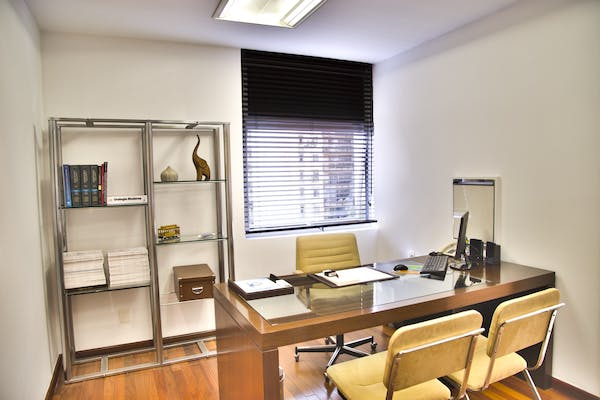Do you have any interior painting projects on the horizon? When you’re busy choosing colors, acquiring brushes and rollers, and prepping the walls, it’s easy to overlook something as simple as the humidity. Many people assume that environmental elements like humidity and temperature won’t impact their paint job since the painting is being done indoors. Unfortunately, however, this isn’t true.
Humidity is a measurement of the water vapor in the surrounding air. Environments with a low relative humidity (RH) have less airborne water vapor than environments with a high relative humidity. Conventional wisdom may lead you to believe that painting an office in low relative humidity is beneficial, as the dry air would encourage the paint to dry faster. And faster drying times means employees can back to work in less time, right?
When an office experiences low humidity, the air will attempt to grab moisture from anything it can, including paint. As you apply paint to the walls, the air will absorb small particles of the paint. Granted, this will encourage faster drying times, but it will also negatively impact the paint’s appearance. Paint contains a complex blend of chemicals and compounds used to create the specified color. Dry air disturbs these particles in way that prevents the paint from achieving its color.
Another reason why you shouldn’t attempt to paint environments with exceptionally dry air is because it may damage/degrade the paint. Although you can’t see it, walls contain thousands upon thousands of microscopic pores that absorb moisture from the surrounding air. Applying paint to a wall fills the pores with the moisture it needs. If there’s not enough humidity in the air, the paint-filled pores will dry out and possibly even crack or peel.
Of course, low humidity can cause a range of other problems, including the potential for upper-respiratory infections, allergies, electrostatic discharge (ESD), and more. Dry air causes numerous problems, only one of which involves the aforementioned complications associated with painting.
The bottom line is that you only start a new painting job if the environment isn’t overly dry. Painting an office or any other indoor environment without addressing the issue of low humidity can turn an otherwise perfect painting job into a disaster. It may look fine at first, but the dry air will take its toll on the paint, changing its color and causing it to dry out.





